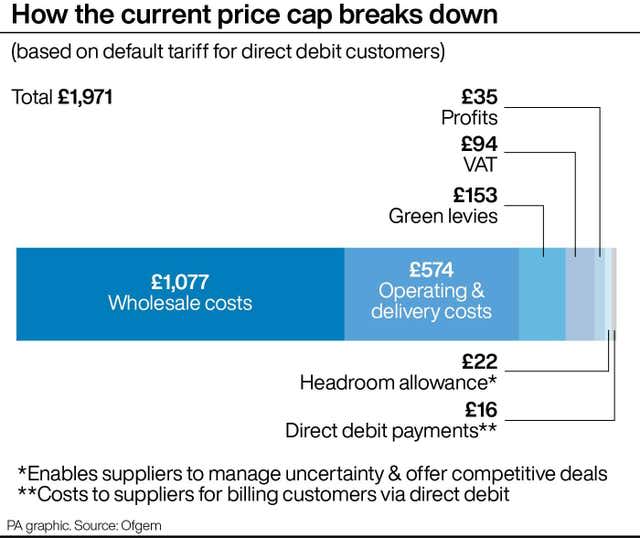Price cap experts forecast £7,700 average bills next year
Forecasts of what the next capped energy price for 24 million households could be have continued to rise as international gas prices show no sign of cooling down, a team of experts has warned.
The energy price cap, which is set to nearly double from already record highs at the start of October, could reach more than £5,600 by the start of next year, and then rise even further, under the latest estimates.
Families could face destitution over the winter if they have to pay 24.37p per kilowatt hour for the gas they burn to keep their homes at a liveable temperature. The price is currently 7.37p, already higher than ever before.

For the average household that means a bill of £5,632 per year from January, up 59% compared to the newly set next cap which is coming in on October 1.
And in the worst warning yet, energy consultancy Auxilione forecast a £7,700 bill from April 2023 – with gas costing consumers 34.22p per kWh.
The forecast is an increase of £438 since Auxilione’s prediction on Friday morning, and up nearly £900 in just two days.
It comes as gas prices continued to soar on international markets, along with the price of electricity.
Almost all of the changes in the price cap are to allow suppliers to recoup the costs that they will have buying gas and electricity from the companies that produce it.

Gas prices are decisive for electricity prices because over the last year 42% of the UK’s electricity was generated by burning gas.
The cap is the maximum price that households on their supplier’s default tariff would have to pay for every unit of gas and electricity they used for the next three months.
It is calculated based on the wholesale price of gas and electricity and also includes allowances for tax, charges paid to the energy networks, green levies and social payments.
On Friday, regulator Ofgem announced that the price cap would increase from £1,971 to £3,549 for the average household starting in October. An average household is considered to be one that uses 12,000 kWh of gas and 2,900 kWh of electricity in a year.
Gas prices were set at 14.92p per kWh from October, and electricity will cost 51.52p per kWh. By April, the experts at Auxilione now expect electricity to cost 117.5p per kWh.
The price cap was previously changed twice a year, but Ofgem is now allowed to review it every three months with changes expected in January, April, July and October 2023.
UK gas prices were trading at around £6.40 per therm on Friday, around 13 times their levels before the Russian invasion of Ukraine.

 Yahoo Finance
Yahoo Finance 